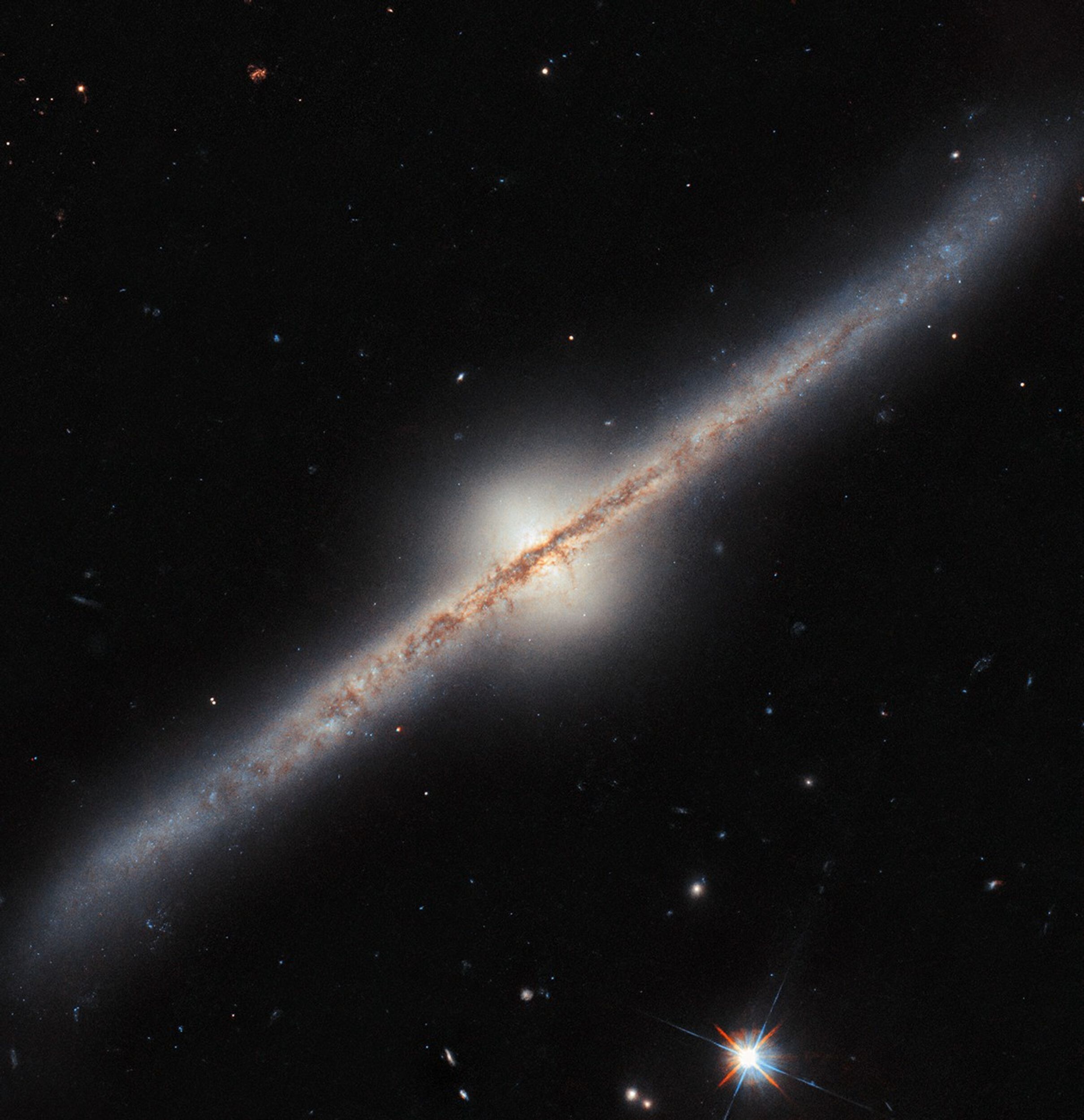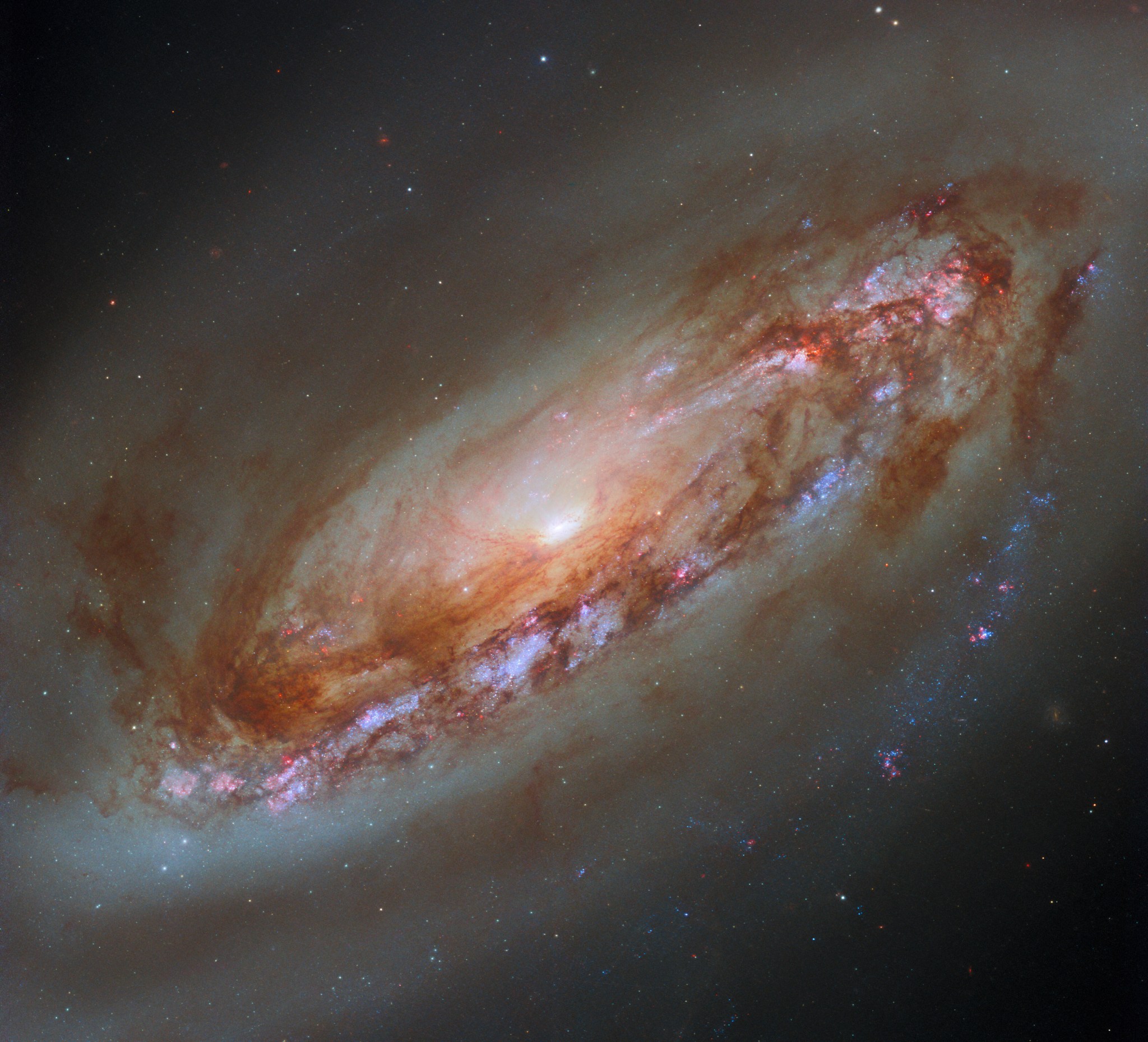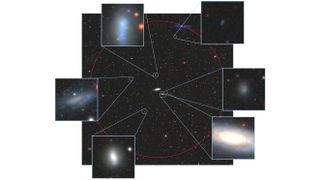Hubble Space Telescope Home Hubble Spots a Spiral in the… Hubble Space Telescope Hubble Home Overview About Hubble The History of Hubble Hubble Timeline Why Have a Telescope in Space? Hubble by the Numbers At the Museum FAQs Impact & Benefits Hubble’s Impact & Benefits Science Impacts Cultural Impact Technology Benefits Impact on Human Spaceflight Astro Community Impacts Science Hubble Science Science Themes Science Highlights Science Behind Discoveries Hubble’s Partners in Science Universe Uncovered Explore the Night Sky Observatory Hubble Observatory Hubble Design Mission Operations Missions to Hubble Hubble vs…
Read MoreTag: Galaxies
Hubble Captures an Edge-On Spiral with Curve Appeal
Hubble Space Telescope Home Hubble Captures an Edge-On… Hubble Space Telescope Hubble Home Overview About Hubble The History of Hubble Hubble Timeline Why Have a Telescope in Space? Hubble by the Numbers At the Museum FAQs Impact & Benefits Hubble’s Impact & Benefits Science Impacts Cultural Impact Technology Benefits Impact on Human Spaceflight Astro Community Impacts Science Hubble Science Science Themes Science Highlights Science Behind Discoveries Hubble’s Partners in Science Universe Uncovered Explore the Night Sky Observatory Hubble Observatory Hubble Design Mission Operations Missions to Hubble Hubble vs Webb Team…
Read MoreSupernova hides in new Hubble Telescope galaxy ‘light show’ image (photo)
A celestial light show illuminates a distant spiral galaxy, where a hidden supernova briefly outshines its stellar neighbors in a new image from the Hubble Space Telescope. The galaxy, called NGC 1672, is a barred spiral galaxy located 49 million light-years from Earth in the constellation Dorado. Billions of stars fueled by hydrogen gas in the swirling arms glow brightly across the galaxy, with newly formed and extremely hot stars emitting powerful radiation that creates a vibrant red light, according to a statement from the European Space Agency (ESA). (Hubble…
Read MoreHubble Captures a New View of Galaxy M90
Hubble Space Telescope Home Hubble Captures a New View of… Hubble Space Telescope Hubble Home Overview About Hubble The History of Hubble Hubble Timeline Why Have a Telescope in Space? Hubble by the Numbers At the Museum FAQs Impact & Benefits Hubble’s Impact & Benefits Science Impacts Cultural Impact Technology Benefits Impact on Human Spaceflight Astro Community Impacts Science Hubble Science Science Themes Science Highlights Science Behind Discoveries Hubble’s Partners in Science Universe Uncovered Explore the Night Sky Observatory Hubble Observatory Hubble Design Mission Operations Missions to Hubble Hubble vs…
Read MoreHubble Observes a Peculiar Galaxy Shape
Hubble Space Telescope Home Hubble Observes a Peculiar… Missions Hubble Home Overview About Hubble The History of Hubble Hubble Timeline Why Have a Telescope in Space? Hubble by the Numbers At the Museum FAQs Impact & Benefits Hubble’s Impact & Benefits Science Impacts Cultural Impact Technology Benefits Impact on Human Spaceflight Astro Community Impacts Science Hubble Science Science Themes Science Highlights Science Behind Discoveries Hubble’s Partners in Science Universe Uncovered Explore the Night Sky Observatory Hubble Observatory Hubble Design Mission Operations Missions to Hubble Hubble vs Webb Team Hubble Team…
Read MoreThe Milky Way’s 2 biggest satellite galaxies are oddly lonely, study finds
The Milky Way’s system of small, orbiting satellite galaxies is quite unusual, a new 12-year study of other galaxies in the local universe has found. The Satellites Around Galactic Analogs (SAGA) survey is being conducted by a small group of astronomers to learn how the Milky Way and its little retinue of dwarf satellite galaxies compares to other galaxy systems. “The Milky Way’s satellite population is a unique combination of small satellites containing only older stars, and its two largest satellites, which are actively forming new stars,” says Marla Geha,…
Read MoreHubble Captures Stellar Nurseries in a Majestic Spiral
Hubble Space Telescope Home Hubble Captures Stellar… Hubble Space Telescope Hubble Home Overview About Hubble The History of Hubble Hubble Timeline Why Have a Telescope in Space? Hubble by the Numbers At the Museum FAQs Impact & Benefits Hubble’s Impact & Benefits Science Impacts Cultural Impact Technology Benefits Impact on Human Spaceflight Astro Community Impacts Science Hubble Science Science Themes Science Highlights Science Behind Discoveries Hubble’s Partners in Science Universe Uncovered Explore the Night Sky Observatory Hubble Observatory Hubble Design Mission Operations Missions to Hubble Hubble vs Webb Team Hubble…
Read MoreHubble Lights the Way with New Multiwavelength Galaxy View
Hubble Space Telescope Home Hubble Lights the Way with New… Hubble Space Telescope Hubble Home Overview About Hubble The History of Hubble Hubble Timeline Why Have a Telescope in Space? Hubble by the Numbers At the Museum FAQs Impact & Benefits Hubble’s Impact & Benefits Science Impacts Cultural Impact Technology Benefits Impact on Human Spaceflight Astro Community Impacts Science Hubble Science Science Themes Science Highlights Science Behind Discoveries Hubble’s Partners in Science Universe Uncovered Explore the Night Sky Observatory Hubble Observatory Hubble Design Mission Operations Missions to Hubble Hubble vs…
Read MoreGas and stars ‘stolen’ from galaxy in striking European Southern Observatory photo and video
A galaxy is robbed of its gas and stars in a new image from the European Southern Observatory (ESO). The spiral galaxy, called NGC 3312, lies within a large cluster known as Hydra I. Located over 160 million light-years from Earth, this cluster contains hundreds of galaxies, the largest of which is NGC 3312. Using the ESO’s VLT Survey Telescope (VST) at the Paranal Observatory in the Atacama Desert of northern Chile, astronomers captured an up-close view of the spiral galaxy, which appears to be “spilling its contents into the…
Read MoreHubble Examines a Spiral Star Factory
Hubble Space Telescope Home Hubble Examines a Spiral Star… Missions Hubble Home Overview About Hubble The History of Hubble Hubble Timeline Why Have a Telescope in Space? Hubble by the Numbers At the Museum FAQs Impact & Benefits Hubble’s Impact & Benefits Science Impacts Cultural Impact Technology Benefits Impact on Human Spaceflight Astro Community Impacts Science Hubble Science Science Themes Science Highlights Science Behind Discoveries Hubble’s Partners in Science Universe Uncovered Explore the Night Sky Observatory Hubble Observatory Hubble Design Mission Operations Missions to Hubble Hubble vs Webb Team Hubble…
Read More








